5 Fantastic First Project Cars
When it comes to a project car, it’s best to dive into one that truly lights a flame inside you. A project car is almost always mentally, physically, and financially draining at some point in your relationship with it. If you don’t care to stick it out through such hurdles, frustration might block you from ever returning to the project again.
So, where to begin? The list of needy cars for sale from the world’s garages, carports, driveways, and open fields can seem overwhelming. It can be easy to dream big. Of course, hell-on-wheels traps exist; certain cars are difficult to source parts for, offer minimal community and owner support, or are just plain prone to breaking.
Some cars, on the flip side, offer a stronger foundation for novices. Today we’ll be donning the role of Car Matchmaker. Whether you’re new to the hobby or a veteran, smoother-sailing and joy-to-own DIY classics are out there— here are five vehicles we think might be right for you:
Little British Cars
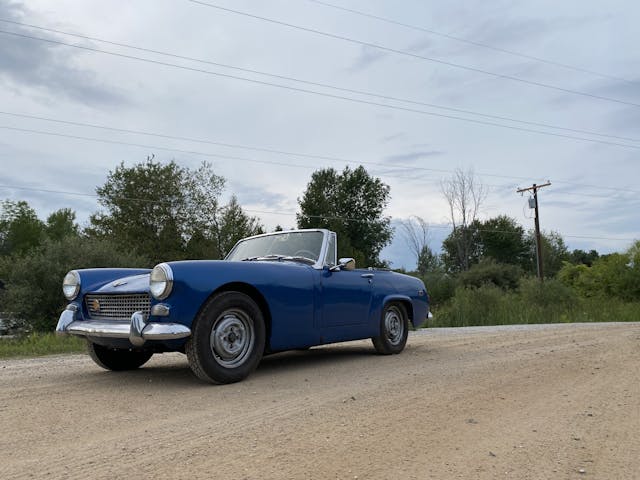
A cheap British sports car can offer plenty of, uh, opportunities to bond with the mechanically inclined owner. The nice thing is that there were tens of millions of Austin-Healeys, Triumphs, and MGs produced during the 1960s and ’70s that share much in terms of maintenance parts and techniques. The cars are relatively affordable, and thus, so are the parts. The biggest boon: support and knowledge provided by other enthusiasts. British car clubs are often large and helpful—perfect for a newbie to the genre.
Volkswagen Beetle
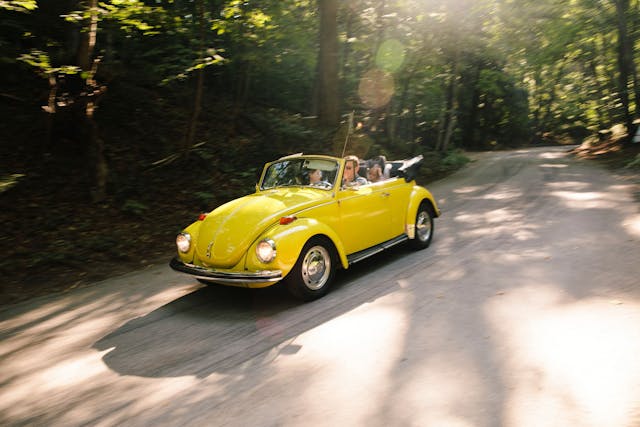
The Beetle dethroned the Model T for the outright model sales record, eventually going on to account for over 21 million sales. There is safety in numbers, which often correlates with good parts support and pricing. The aftermarket support for Bugs is downright impressive, even compared with other mainstream vintage cars like Mustangs or Chevelles. Beetle owners will get familiar with regular maintenance like oil changes and valve adjustments, but the fundamental build and design are sturdy; if you do the job right the first time, you likely won’t have to do it again unexpectedly.
Ford Model A or T

You want to learn the basics? Then buy one of the most basic cars you can drive. Just stare at a Model T for more than a few minutes, and you’ll notice that none of the critical parts are hiding. Everything is pretty out in the open. Best of all, components were overbuilt by a factor or two in most areas. Model Ts—and As, for that matter—don’t require many power tools, which means they’re accessible and enjoyable to work on whether you’re a tool rookie or an experienced wrench. Fun to learn on and fun to drive? That’s a good project car.
Trucks of the 1970s and ’80
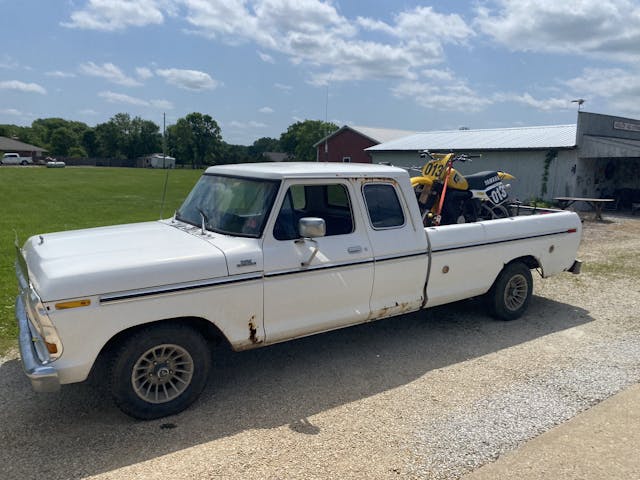
As simple as the aforementioned Fords are, their age comes with real-world usage limitations. If a utility is an aspect you value in a finished project car, vintage pickups from the 1970s and ’80s are a great place to look. These are rugged, tough hunks of metal that enjoy fairly high tolerance for deferred maintenance. If you are willing to buck up and take on the challenge of catching up on all the stuff the last owner neglected, the juice can be worth the squeeze. Fruits of your labor will include functional overdrive transmissions, disc brakes, and decent power, all baked into solid packages with relatively simple powertrains and chassis. Being trucks, they also have beds for work—or pleasure hauling. For those without a utility-focused daily driver, that’s a nice bonus when trying to justify how a collector car fits into your lifestyle.
Anything you don’t expect to daily drive
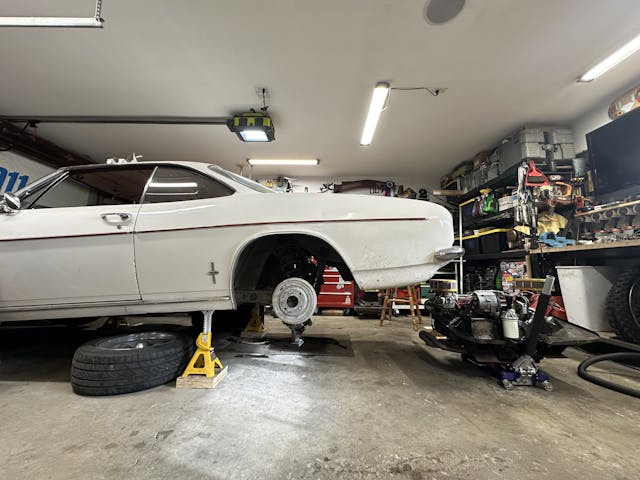
In reality, just about anything that makes you look forward to dirty hands and busted knuckles is the right project car. Expectations, however, are important; old, semi-working cars tend to behave like old, semi-working cars—they can break down and sit out of commission for extended periods. Take it from me: Spending Sunday evening underneath your car is a lot more relaxing when you don’t need the thing to get to work the next morning.
*
The whole project car process, even if it requires a long timeline, can be as rewarding as the end result. The thrill of parts finding is sometimes more thrilling than installing or even using said parts; whether buying something that requires lots of networking and parts hunting might be perfect for you, as long as you go down that road with both eyes open. Tougher endeavors in that vein hone project-car skills, but the learning curve is often steep and time-consuming. Patience is essential, so if you want more immediate gratification, relative oddball stuff like Wankel-powered NSUs or Nash Metropolitans may not be the ideal place to get your feet wet.
Find a car you think you’ll love, and the learning, fixing, and driving it all become part of the adventure. Get some experiencce under your belt and before you know it, you’ll have more than one project in the pipeline—don’t say we didn’t warn you!
***
Check out the Hagerty Media homepage so you don’t miss a single story, or better yet, bookmark it. To get our best stories delivered right to your inbox, subscribe to our newsletters.
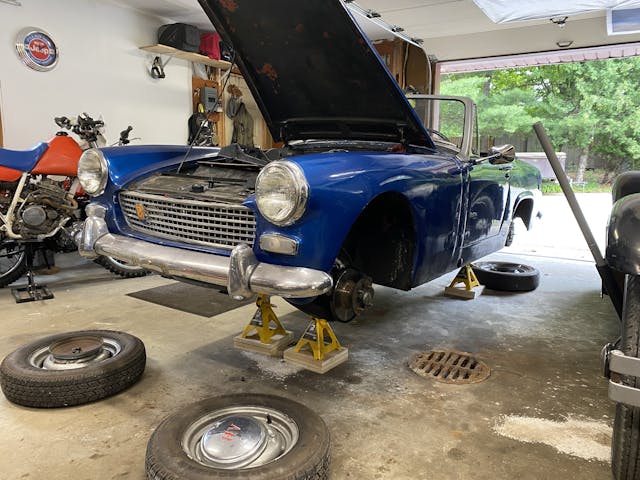


Pretty much any generation Honda Civic or related model, though I would say that the 1992-95 and 1996-2000 generations are probably the best in terms of reasonable price to acquire and parts and information support.
I very much agree with you on this one.
I agree, I have a 1999 Civic HX with a 5 speed stick. Fun to drive and very low maintenance. Plenty of parts availability too!
Anyone interested in a 1996 2dr Honda Accord Coupe 5speed, One owner garage kept. Black all original.
Burley T
burleyturley@yahoo.com 1996 accord
Tell me more!
Yes, I am interested please.
Mileage
how about a 1978 corvette, complete restored like original
where can the vette be seen
Honda discontinues commonly needed parts for older models after about 10 years. The aftermarket (primarily “R.A”) is basically your only resource. The first generation Civic (‘73-‘79) is worst off, except for rarities like “Civic Garage” out of Australia. I can only dream of the plenitude of parts enjoyed by air cooled VW enthusiasts as I struggle restoring my ‘78 Civic. But the journey is fun and rewarding.
Check out “Ivory’s Place”. If Jake does not have parts, he can find them. In business for 15 years.Also known as “The Honda Hoarder” 402-871-5410
How about the Datsun 510 and Peugeot 404. Both simple and practical. I personally have a 1959 AH Bugeye. Yes, easy to work on except you have to get it off the ground to do just about anything as it is so low. Also, pretty scary to drive on any road these days because everything dwarfs it.
A few thoughts:
-First-timers should get something they like that is already legally on the road, then tinker.
-a common vehicle at the end of commuter use, becoming collectable stage is ideal. This is usually the 15ish year mark, longer for trucks. So the GMT400 88-98 trucks are a good example: prices are rising on the sweet spec, low mileage ones (and the SS of course) but you still see beater versions of them around town. Mustangs, Camaros, Challengers, Miatas, etc.
-buy early… as in get the nice-spec late model Challenger now while you can still easily finance it. Then treat it well (in some locales this means driving a cheap thing in the winter) and 20 years later you have a classic with deep personal history, and possibly something then-you couldn’t afford to go grab (look at BMW price jumps where something you could almost afford 15 years ago is now 4x out of reach).
-If you know what you love, join a club and be active. Odds are you end up with a well-sorted car through a club connection and are way further ahead then a basket-case of unknown pedigree you got cheap from a random character.
Had a 2009 challenger. The pushbutton start stopped working. The dealer under factory guidance replaced $1300 in parts. The factory then said oops that won’t work it’s a software problem and we are not going to take care of it due to age and I’m only one guy. They did refund all the money spent though.
stay away from cars with a lot of electronics and sensors.
Agreed. I built one car (rescued it from going to the scrap yard). The Body and all the trim was there, but everything mechanical was worn out. It was a 69 Charger 383-4V S/E factory air car. In 1994 when I finished building it back to stock I had 27K into (including the 3.5K purchase price). It was worth 17K. The year one parts book had a chapter in the back of their catalog at the time that said “you will never make money” and “you are better off spending more money on the front end….as in going up from a class 4 car to a class 3 car”. I found that to be very true. Anyhow, I drove the car for 23 years joyfully. I ended up putting a 492 cube stroker motor in it and it did the quarter mile …on a DYNO at 11.73 and 113 MPH with 3.23 gears and A/C on. When I had heart work done, I sold the car to a guy in Holland (Netherlands not MI). I ended up having 50K total in it, a lot of which was Maintenance. I sold it for 47 in 2017. So I had 23 years of entertainment for 3000 dollars. NOT bad in my book. Sorry I sold it. I thought I was going to die and didn’t want my wife to get screwed over.
I watched 2 hunting friends die and their wifes got ripped off big time on there guns and other hobby stuff.
Great story, Bob.
I recommend anyone(myself included), write up detailed information on the items that could be an issue after your passing, expected or unexpected. Basically, write a detailed article about the item, as if you were going to sell it to someone sight unseen. This way, your wife(or husband) could have all the information, plus some pictures, and be able to sell the item as close to true value as possible, with minimal stress. If you could have a close friend(whose familiar with the item) represent the sale as well, even better.
When you figure in inflation from start to sale you actually lost more money. However, don’t despair, it was still a good deal. You enjoyed the car for 23 years, received great satisfaction from doing the work, and I am sure met many others with similar interest. If you “lost” $20,000 dollars it would still be a good deal. Owning 4 new cars over the 23 years, adsorbing the depreciation, maintenance cost, insurance and etc. would probably cost at least $80,000 so I would say you came out way ahead doing something you enjoy!
Good observations
Great story and neat car! Keep in mind that $47k in 2017 bought considerably less than in previous years/decades due to inflation.
You can’t put a price on a hobby. Its something you enjoy & spend time and money on at your leisure. You are not making a living or a business so you can never justified it. I admire your delectation , money well spent. Its hard to get rid of something you care about and put so much into it, and understand why. Take condolences that you found someone that appreciates it also.
This is an important lesson for all the guys out there.
Inventory what you have and set a realistic…(read that twice) value.
Leave it in writing for your spouse.
If you have tools, guns, cars, whatever – if they don’t know, give them a guide.
Example – I had a major scare 9 years ago, quick scribbled out on a piece of hospital note pad paper some info for the Mrs.
It isn’t about the stuff, rather giving the ladies the knowledge they need.
There was an episode of Motorweek on PBS I saw in the past few months where they featured a company that rebuilt/repaired electronic devises for many cars. A search of their current season episodes might be worthwhile. I was amazed at the variety of devices they could repair. Good luck!
the problem with the newer cars is the excessive electrical and computer components will fail and they will be a nightmare to maintain, unlike the analog vehicles of earlier decades.
I started with VW beetles in the 90’s affordable and parts were super cheap back then. I have 3 Ford Model Ts, 2 restored, on not, definitely an affordable project car to consider. The other affordable project cars right now, i believe are the gen 3 Camaros and Firebirds, even the Fieros. I picked up a pair of 84 Firebirds this summer from the same guy this past summer, both complete but not running. Did the fuel pump, carburetor, fuel lines, tune up, tires and a new windshield and one of them is already a driver. I picked up the pair for $1400. Colorado low rust cars.
The priority to a good first project car are readily available parts.
Many modern Asian cars are not easy to find or buy parts for them. They changed engines do often it can be hard to find parts.
On the other hand a Model T can be built new from repo parts if needed. Same got an MG.
Also these are easy to build basic engines.
More modern 80’s cars the plastic parts are difficult to fine and many are not reproduced.
Kyle, you missed the three most obvious answers:
Miata
240 Volvo
C3 Corvette
All of them: readily available parts, active community, easy to work on, cool (in their own way), not boring to drive, and decently reliable. How do I know? I’ve had all three! The Volvo was That Volvo that Sam Smith helped give away; the Miata was my dad’s first sports car, handed down to me; and the Corvette was the classic I sold way too soon that I’m bound to find an buy again (we all have those stories, of course.)
I agree with both the Miata and the C3 Corvette. Had two ’95 Miatas that were easy to work on and tons of fun. I currently have a 1973 Corvette Coupe that I bought from the original owner (my uncle) with 36,000 miles on the clock. Looks like show room new but since it sat so much, it’s a bit mechanically needy. So my son and I have been slowly going through the car and (learning) doing the mechanical work needed to get it road worthy. My bucket list is to take her the full length of Rt 66 for the 100th anniversary in 2026.
I’m with you on everything except the British cars… something that breaks often and is hard to get parts for is not something I would recommend for the novice.
I came into collecting backwards by being broke and always driving old junkers. I learned in my broke days that I could maintain two clunkers cheaper than the average person maintains one ‘less clunky’ car with a payment book. Things kind of evolved from there.
Point being, your first collector car might just be that hunk of you-know-what that you already have if it has stood the test of time and has become semi-collectible
I have a 1975 Triumph TR6 and have found parts are plentiful, either from companies like Moss or eBay. And the expertise of club members (and their willingness to help) is amazing.
Finding parts for many desirable British cars is waaaaay easier than finding, say, Honda parts from the same era.
Hondas don’t need the constant tinkering British Leland cars do thus you don’t have the aftermarket support and supplies available.
Right ….
That’s why CVCCs are so easy to find.
Stop it. Hondas are throw-away cars when they have reached their useful life. Sad as it may be for their fans, they are some of the most difficult older cars to restore.
British cars don’t break any more often than Volkswagens or any other typical vintage car, and parts are plentiful (The Roadster Factory fire notwithstanding). They do require some regular maintenance, but that’s why it’s a hobby.
This has not been my experience, when comparing the air cooled VW beetle to British cars.
Parts for mainlind British cars are very easy to source. Particularly MG, Austin, Jag, Triumph etc. Sunbeam/Rootes/Hilman are a bit harder – and Vauxhall not easy at all. Standard Vanguard mechanicals are basically Triumpn – available from your neighborhood Fergusson tractor dealer (Only half kidding) but body and chassis parts not so easy. Opel (in the states) is easier than Vauxhall in Canada.
All easier than getting ’70s Toyota, Mazda or Datsun/Nissan parts – or even not-so-popular American stuff that wasn’t sold outside North America. British vintage spares are often available out of Australia or New Zwaland or even India if not available from Great Britain – or Octagon or Moss or other North American specialists.
Parts for common (non VW) German cars are a bit harder to source – and sometimes more expensive – but pass on stuff like a DKW or a Lloyd or a Bourgard (unless you have contacts in Argentina)
Things got a LOT easier since the internet!!!!! Finding parts for the 28 Chevy, the 35 Chevy and the 37 Teraplane in the seventies was pure HELL – and parts for the ’53 Coronet and the ’57 Fargo in the ’70s and ’80s wasn’t much better!!!! (or the ’72 Pontiac Firenza SL2300 (Vauxhall Viva HC Magnum in the ’80s)
British car lovers… I am speaking from hearsay and not actual experience, so point taken
I’ve had a Spitfire for over 20 years and they are fun cars. My wife suggests its a death trap and I am not keen on going down the interstate in the car. But simple to work on, easy to get parts, I think the only thing I can not remove on my own is the bonnet and the engine. Transmission, rear end, everything else is a one man job. If you wanted to teach a kid how the basics of a car work, good example. I would suspect a Midget is the same thing. Let some one not familiar with such cars take it for a drive and watch the horror as they figure out a standard tranny, and non power assisted brakes and steering. But these LBC’s handle quite capably. I have rebuilt the transmission, totally rebuilt the seats from scratch making my own fabric patterns and so forth. Everything is pretty simple if you want to keep the budget small and are only looking for a decent driver. The frame rails in the back were in bad shape and a local frame guy wanted a fari price of $400 to fix the issues. So I bought a welder and learned how to weld laying on my back. That was back then and my older frame wouldn’t tolerate those gymnastics these days…..
Not sure I agree with your theory on British car parts being hard to get. There are several large suppliers of parts that offer nearly every single part for the 3 mentioned. (AH/MG/Triumph) I own 1 of each & have never had a problem finding parts for them. I have had my 1955 MG TF1500 for over 40 years & 5 original engine rebuilds (every 100k miles) Some parts for my 1973 Opel GT hard to find except used. Most parts for my 1996 Mitsubishi 3000 GT Spyder (particularly “spyder specific parts”) impossible and/or extremely costly for used. Never had a problem finding parts for my British cars. I can direct you to a website where you could literally build the entire car from new remanufactured new parts. Admittedly some of them need “minor modification” to fit properly. I try to stay away from the ones made in China or Taiwan. LOL.
I agree with this list and were it longer would add a sixties-era Valiant. There’s a young guy in my general area who uses a ’49 Plymouth as his daily driver, showing that such an approach could work as well.
Classic jeeps. Easy to work on, accessible parts, and a community of people ready to help and advise.
Agree on the Jeeps. I already had a ’73 VW Beetle that I drove daily in the Chicago area, it taught me so much about vehicle maintenance. Now i have a ’84 CJ7. While I don’t drive it every day, it is more like a Model T where everything is in plain sight and easy to get at. Parts are readily available, aftermarket scene is huge and covers mild to wild. The nice thing is that you don’t have to make it perfect, primer and rust holes are totally acceptable – you almost always get a “nice Jeep” comment where ever you go.
Great choices but trying to find one of these without massive amounts of body rot is almost impossible. I am not really too sure about those corvairs, I never had much experience with them.
I had zero experience with Corvairs when I acquired mine on a trade. To add to the learning curve, this one was a V8 conversion that needed everything. 17 years later, and more $$ than I want to discuss, it’s a really fun car to drive and consistently draws a crowd. Maybe there’s another 17 years in it.
A Crown conversion?? I have most of a ’68 or ’69 110HP engine in peices in the garage here in Waterloo Ontario if anyone is interested
I bought my ’65 Corvair new for $2135. 35 years later I sold it to a friend for $2000 (thanks, inflation) Had 275,000 miles on it and was on its 3rd Corvair engine (4th crank), 15″ wheels & tires, 4-wheel disc brakes, Porsche dual 3-bbl Webers. Besides being a home modified daily driver all that time, I and my wife autocrossed it, did track days. I was doing monthly interstate drives for 20 yrs. Great car once sorted out, except for the heater.
I have had a number of Corvairs over the years (and currently own four!). When properly set up and secured, the Corvair heater is quite adequate for any temperatures (with the possible exception of the defroster!). Once I redid the heater in my ’64 Monza Convert, you could almost bake a pizza in the back seat! And I have installed a high-speed heater blower from GM big cars in my ‘Vairs (yes, a bolt-in, but you need to install a relay to carry the load!) to help with that.
I have a 62 Corvair Spyder Convertible, and a 65 Corvair convertible. They both get lots of looks when driving. These cars are habit forming as you can’t just have one.
Having brought an old car back from a decade of stagnation, it’s worth noting that an old car will always be an old car, and that as parts age, they tend to wear out or break down. That doesn’t mean you shouldn’t do it, it means that you won’t ever be done fixing it. Yes, that’s often part of the fun, but if you expect a rebuild to run like it did when it was new, you may end up disappointed.
I have one of the latest generations of VW Super Beetles, and the fuel injection and the year of manufacture means that, in California, you really can’t get away with modifying the engine, so the California VW crowd ignores that era, and as a result, so do many of the replacement parts makers.
California makes the 1976-1999 era especially troublesome: full dyno comprehensive smog test every two years…. and you’d better have everything in place and working. No thanks!
There are many options out there to make this a non-issue.
Most of the folks here have some money to toss around, yet you deal with emissions testing?
IDK – I moved to PHX AZ almost 30 years ago and the only stuff that goes through emissions is what I WANT to go through emissions. As a poor college student or today, no difference. You really must study and use the system to your advantage.
Totally agree with this list. My first was a 63 Beetle and two of my friends had a Spitfire and MGA respectively. What a learning experience for a bunch of dumb punk kids. Another friend’s Dad had an XKE and another had an AH 3000. Great times.
I have a 1985 Celica GTS convertible that I have to tinker with from time to time but it is great to drive and I would not have anything newer. Parts are not a problem and I always get great comments on it when shopping at Wmart or Home Depot.
Agree with all but I don’t think you will find 10’s of millions of British cars. They made far fewer but who cares really.
The Volkswagen Beetle is certainly a great car to chose as a hobby vehicle. Parts availability is great, even though, there is a lot of aftermarket junk to be had. So, be careful what you buy and rely on others for advice. Join a forum to get ideas. Mechanically the bug seems easy to deal with. But the design is so out of the ordinary that people easily get baffled and screw up badly. Learn through good repair literature or videos before grabbing the wrench and going nuts. I own a 1970 beetle, imported from Europe. It is in great condition, all original and I am trying to keep it that way. I use it daily driver except in winter. I am a trained VW tech, having done my apprenticeship in the early sixties. That helps keeping my bug in top shape. 🙂
Great work Dietrich ,your car is in great shape ,always good to see it on the road …
Stay safe !!!
I came to post something similar.
VWs are great and easy to work on, but the two main problems are cheap Chinese parts and misinformation. “You don’t need that piece of tinware/thermostat” being the most common. Also, almost nobody knows how to do an alignment on swingaxle VWs nowadays (and that it needs to be done when you change the transaxle mounts). I have a guy who agreed to chain it down and level the axles before setting it to 1/8-1/4″ of toe-out. You already know this, but it blows people’s minds that they need toe-out. For the uninitiated, as the wheels move up and down through their arc they very quickly go to zero-toe, then toe-in. If you set them with some toe-in then they get waaaaay too much as you lean into a curve, lose traction, then you’re suddenly watching a tree go by the windshield…
…At least twice if you don’t hit something!
Had a ’70 Cal look beetle, 1915cc engine, Selectadrop front, shaved lamps replaced with 356 front buttons/rear teardrops, filled rear valance and Monza 4tip exhaust & nerf bars front and rear. Speedster chrome rims w/flat caps and Dunlops all round. Built it as a clone of one a military friend had in the late ’70s, his was monochrome black, mine was Torch red. Easiest car to keep up and right I’ve ever owned, 2×2 Del’Ortos included. Parts available 24/7 from many competitive suppliers, so much information from clubs & online- seriously, a reasonably capable 13yr old could build and maintain one of these. And, if necessary, one can source an entire factory correct steel body from Denmark. I miss Herr Röttenstürm, wish I’d never sold him☹️. Sigh.
1st car should be road worthy to some degree. There is little pleasure to be gained by working on something for years that you never get to drive’ it, keeps the motivation up. Also keep in mind that your Tools will need to match the level of project you take on.
Im agree. A T would not be a good 1st time project even if you learned how to drive it. Even a model A is a little sketchy, but would be an easier car to take out on short hops on the weekend. I agree with British cars, VW, & older Asian cars. Even 50s & 60s US cars in good shape when you buy them would be great projects. 4 drs & wagons are starting pick up interest. A lower model in any car is going to be cheaper to initially buy for a project
I have to disagree, especially along the lines of a Model A. Almost all parts are still in production and those that aren’t are readily available. It uses conventual distributor. I have owned three and driven over 60,000 miles and and through more than 30 states and never had to be trailered. It’s true they require more routine maintenance but that is why most of us get in to the hobby.
I bought a 1970 Beetle about 15 years ago. It was in really nice mechanical shape (thanks to the previous owner). It had a really bad paint job, which is why I bought it…to improve my painting skills. It was a fun car that came apart easily to psint.
After 5 years a 4 color changes, I sold it to a friend.
My rule is to buy something that either needs mechanical help or cosmetic work…not both. Novices will not get as frustrated as they will be able to get their car on the road to enjoy.